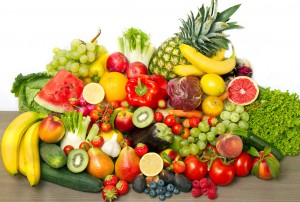
by Susan Cable, RHN
We are repeatedly told that joint pain, back pain and arthritis are an inevitable part of aging and we should just accept this. Quite frankly, I disagree. I do agree that we put a lot of wear and tear on our joints and spine over the years, and this does eventually catch up with us, but it does not have to manifest into a debilitating disease leaving us with limited mobility.
As a housewife in the 1980s, it was still common for the woman to be responsible for the housework and the man to be responsible for the pay cheque. So down on my hands and knees I was, scrubbing floors, cleaning up toys, vacuuming and doing all those other joint-deteriorating chores. On top of all this, I did it for others for several years, working as a homemaker for seniors and individuals with severe health challenges. Throughout my adult life, I have taken advantage of my joints, spine and muscles with the things I enjoy the most. Professional dressmaking was a part of my life for nearly 10 years – very hard on the finger joints and wrists. My bike was my vehicle, and 350 kilometres (217 miles) a week played havoc on my hips and back. And now as a competitive body builder, every muscle, joint and bone is abused. Fortunately for me, I know how to take care of my joints and spine and I am able to still be as mobile as I was when I was 20 years old.
I know it sounds like I have the perfect structural scenario, but that is not exactly true. During a rare visit eight years ago to my doctor for severe back pain, I was diagnosed with scoliosis and a severely fused lower disc. I was told I likely had the scoliosis from a young age and the fused disc had been manifesting over several years. This surprised me very much, because up until that point, I didn’t even know what a back ache felt like. Un- fortunately, this was hindering my ability to exercise, and I preferred to lie in bed and just feel sorry for myself. But after two months of physiotherapy, I was starting to feel mobile again. I gave my head a shake and said enough is enough. I put an end to my self-pity and back to the gym I went.
During this time, I took a good, unbiased look at my diet and lifestyle and I realized I had fallen off the wagon somewhat. My diet wasn’t what it should have been, as I was living in the country without my better half, so cooking proper meals was not a priority. My exercise routine had become slack since I was 45 minutes from the nearest gym and I had now bought a vehicle, so my bike was taking second place. I then assessed my stress levels. Anyone who has ever built their own home will know exactly how stressful that is. So taking all of this into consideration, I could only blame myself for my own demise.
I knew what I had to do and I did it. Now, eight years have gone by and my back rarely bothers me. The only joint in my body that gives me occasional pain is my thumb, and that is from a training injury. I do approximately 200 kilometres (124 miles) on my bike weekly and train five days a week and run twice a week. To the so- called laws of aging, at 56 years old, I say no thank you, I’d rather age my way.
I see a lot of individuals in my practice, the majority being 45-years plus. Most of these clients have health concerns of joint pain, fibromyalgia or arthritis, and are taking numerous, potent medications, but are not changing their eating habits or lifestyle. Fast foods and prepared foods have taken the place of home cooked, nutrient-rich meals. These foods are lacking the vitamins, minerals and essential fatty acids which are necessary for nourishing the bones, joints and muscles, and are needed for repairing free radical damage (damage done to the cells by chemicals, toxins and stress) done to the body.
Vehicles, video games, computers and luxury travel have taken the place of walking, biking and visiting the gym. Even the basic task of going downstairs to do the laundry is seldom required due to main floor laundry rooms. And last but not least, stress has become abundant in our lives. For many, finances, family, health and employment are a consistent stressor, and this can manifest as back and shoulder pain. Much of this we have no control over, but we can take the personal steps to support our whole, structural body and do what we can to reduce the risk of many of these menacing imbalances.
In a perfect world, everyone would grow their own nutritious fruits and vegetables, naturally raise cows, pigs, lambs and chickens, and of course, we would all be physically active and cycle to work every day. Well, unfortunately this is not a perfect world and very few people are at the advantage (in my opinion) of having these luxuries. Instead, we rely on genetically modified fruits and vegetables from around the world, grown in soils laced with fertilizers, which depletes the soil’s natural nutrition. Industrial agriculture often houses animals in very inhumane, unsanitary conditions, which leads to stressed and sick animals we then consume. And it seems as though our fingers get more exercise than any other part of our body due to texting, computers, remote controls and many of today’s other high tech contraptions that are inevitable in the 21st century. I am able to practice much of what I preach, but unfortunately the only animals I can raise without breaking the law in my community are my dogs and my cat. I do, however, grow my own organic fruits and vegetables and I do cycle frequently and exercise regularly.
Consuming a diet rich in minerals and high-quality protein is essential for nourishing the bones. A diet abundant in essential fatty acids will keep the joints lubricated and will help to reduce inflammation and support a healthy nervous system. Including plenty of antioxidant-rich fruits and vegetables in your diet is probably the most important step you can take to keep your body strong. These super foods help to fight off the damaging effects of stress, both physical and emotional, and they are powerful for helping your body to naturally rid itself of the toxic chemicals and substances in our food, water and the air we breathe. These anti-nutrients are very damaging to our bones and joints and will weaken our immune system, making us more susceptible to other conditions, such as fibromyalgia and rheumatoid arthritis.
Good sources of antioxidants include garlic, berries – the darker the better – citrus fruits, tomatoes, dark leafy green vegetables, onions and deep orange and red fruits and vegetables. Below I have listed the most valuable minerals for strengthening and nourishing the joints and bones and food sources high in these nutrients.
Food Sources of Essential minerals
Boron: apples, carrots, grapes, raw nuts, pears, whole grains
Calcium: dairy, sardines, seafood, blackstrap molasses, dark leafy greens, tofu, asparagus, almonds
Magnesium: dairy, fish, meat, avocados, bananas, whole grains, nuts
Manganese: nuts and seeds, whole grains, egg yolk, legumes, blueberries
Phosphorus: asparagus, corn, dried fruit, eggs, fish, legumes, seeds, meat
Silicon: whole grains, brown rice, oats, leafy greens, bell peppers
Strontium: seafood, whole grains, root vegetables, leafy greens, legumes
Foods rich in essential fatty acids
Fish oil
Emu oil
Flaxseed oil
Grapeseed oil
Primrose oil
Olive oil
As you can see, the foods we need for optimal health are at our fingertips. If you suffer from arthritis or fibromyalgia, it is best to limit the group of foods called “the night- shades.” This group consists of tomatoes, potatoes, eggplant, peppers, cayenne peppers, chili peppers, paprika and pimentos. These foods have the ability to remove calcium from the bones and deposit it elsewhere in the body where it does not belong. Many of my clients have found that by eliminating these foods completely from their diet, their pain has diminished substantially. Be sure to drink plenty of pure water daily as this will help to lubricate the joints, flush out toxins and keep you well hydrated and energized.
Mother Nature has given us everything we need to stay strong and healthy throughout our lifetime. Yes, there are times when we may be predisposed (family genetics) to disease, but it is still possible to reduce the chances or eliminate the risk of inheriting the disease by nurturing the whole body, mind and spirit.
By consuming a whole, natural foods diet – organic whenever possible – and keeping physically active, you will be doing everything you can to support not only your structural system, but your entire well-being.
Remember, it’s never too late to get active; you can do anything you put your mind to. So this month take up a physical activity you enjoy, meditate in your own way for stress-management and enjoy life to its fullest.
Susan Cable is a registered holistic nutritionist (www.balanceyourbodynutritioncounselling.ca), educator, competitive body builder and business owner. She is the senior academic advisor for the Canadian School of Natural Nutrition, where she aids in the education of students worldwide in holistic nutrition. She works and lives in Hastings, Ontario.






